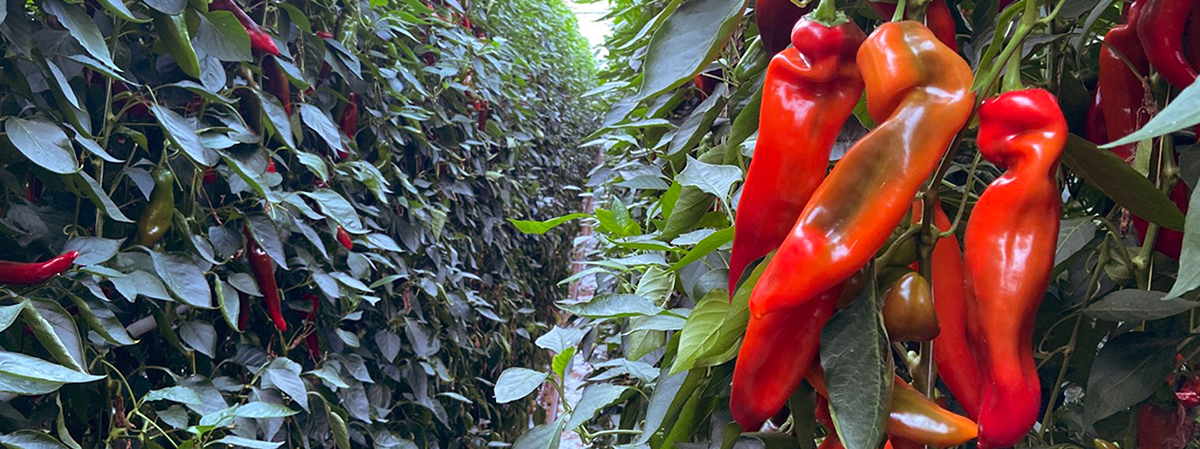Cultivation
The first six weeks, the nurseryman rears the sweet pepper plants. After this period, the plants are transported to our nursery where they are planted on rockwool. Then we attach three strings to each plant to hold them up and prevent the stems from falling over. The plants are watered by an emitter and will grow steadily. After about 5-6 weeks the first green fruits can be harvested. In case the green fruits are not harvested, the red fruits can be harvested two to three weeks later. This is when the season is really getting started. It runs from the first of March until the end of November. During this period, we harvest between 2 and 2.2 million kilos of sweet red peppers. The fruits will be cut off with a knife and put in containers. In the barn, the sweet peppers are sorted by size and weight. The fruits are packaged in packages of either 5 or 10 kg. After weighing the boxes, they are stacked on a pallet. These are usually collected the same day, so they can be in the stores the next day.
Unique hoisting system
Near mid-November the season comes to its end, the vegetation can be shredded and everything can be cleaned. Our company has a unique hoisting system that can lift both the heating system and the gutters at the same time. This way the plastic and the plants can easily be removed and replaced with new plastic. This way we can make a good clean start each season. The cleaning period takes about three weeks. After that, the new plants can be planted during the first week of December.
Combined heat and power
A lot of technical measures are involved in growing sweet peppers. To keep the climate under control, we have a climate computer system that provides the optimum level of climate control. We have a large kettle and CHP (combined heat and power) for heating the greenhouses both in the winter and the summer. The CHP generates heat and power. The power is returned to the network, so people at home are provided with light. The heat is saved and used for heating the greenhouse and has an efficiency of about 95 percent. The flue gases that are released are used to add CO2, so the plants can grow better.
Rainwater storage
In the Netherlands it rains a lot in the autumn, winter and spring. During this period we collect the rainwater and store it in a large reservoir of 8,000 m3 in total. We use this in periods with little rain. On very hot days, we give about 10 litres of water per m2.

 English
English Nederlands
Nederlands



